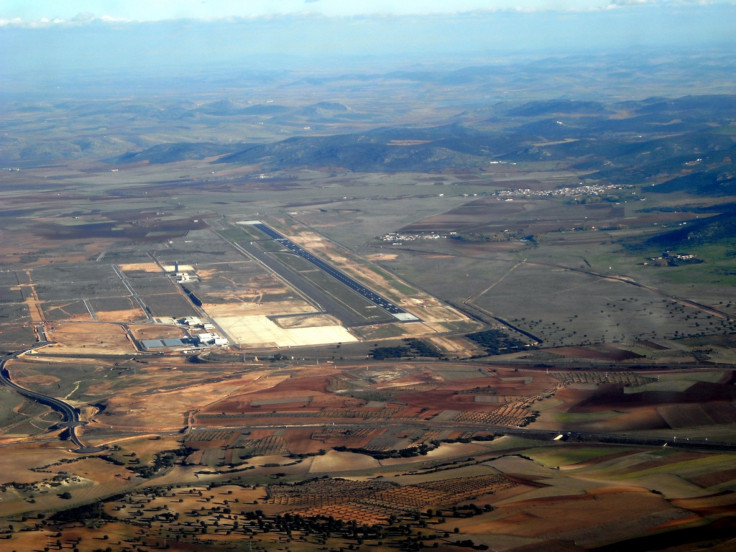Spain’s $1.4B ‘Ghost Airport’ In Ciudad Real On Sale For Just $140M

It cost one billion euros ($1.4 billion) to build, boasts Europe’s longest runway, and has a vast terminal building that can handle as many as 10 million travelers per year, but Aeropuerto Central Ciudad Real hasn’t seen a single commercial flight since 2011. A larger-than-life symbol of Spain’s real-estate bubble, the nation’s first private international airport hit the auction block Monday with a starting price of just 100 million euros ($140 million), one-tenth the cost of construction.
Why investors like Caja Castilla La Mancha savings bank, the first of Spain’s savings banks to be bailed out in 2010, believed the airport would attract such large crowds has been the topic of much debate. After all, Spain had more international commercial airports than any country in Europe before the new facility entered an already-saturated market with just four flights a week.
Others questioned the folly of its location in Ciudad Real, an unspectacular city of around 75,000 people about 200 kilometers (125 miles) south of Madrid. Halfway between the Spanish capital and the Andalusian coast (and an hour away from each by high-speed rail), the airport was designed to serve both locales, but its kill-two-birds-with-one-stone approach failed to woo the expected passengers.
By the time it opened to the public in December 2008, Spain was on the verge of imploding, and by the time the airport welcomed its final commercial flight in December 2011, Spain was in the throes of a double-dip recession. The “ghost airport” has sat unused since then, save a few private arrivals in early 2012 and a stint as the backdrop for Spanish director Pedro Almodovar’s 2012 dud “I’m So Excited!”
Terminal operator CR Aeropuertos went into bankruptcy three years ago and announced in recent weeks that it would sell the airport complex under a liquidation plan. It began accepting bids on Monday to meet creditor demands, but interested parties have less than three weeks to make an offer before bids close on Dec. 27.
Formerly known as both Don Quijote Airport and South Madrid Airport, the Ciudad Real complex is one of several “ghost airports” that dot the Spanish countryside. Other facilities opened in recent years, like the airport at Castellon on the Mediterranean coast, have yet to see a single flight.
Francisco Perez, one of Ciudad Real’s bankruptcy administrators, told the Financial Times that the airport’s good transport links and relative isolation could make it a valuable asset to those involved in aircraft maintenance or similar businesses.
“We know that both in Spain and abroad there exists the idea that building this airport was an absurd operation that made no economic sense, because it is an airport without passengers,” he said. “But this is a theme that has nothing to do with reality. This is an airport that is basically directed at business and industrial activities, which means air freight and companies involved in the aerospace industry.”
Perez said that while no firm offers have been received thus far, “there are several interested groups.” Administrators plan to make a final decision on the bidder by February.
Spain tentatively emerged from recession in the third quarter with 0.1 percent growth, though it posted an unemployment rate of around 26 percent. Despite the glimmer of hope, analysts warned that the debt-laden country’s economic crisis was still far from over.
© Copyright IBTimes 2024. All rights reserved.






















